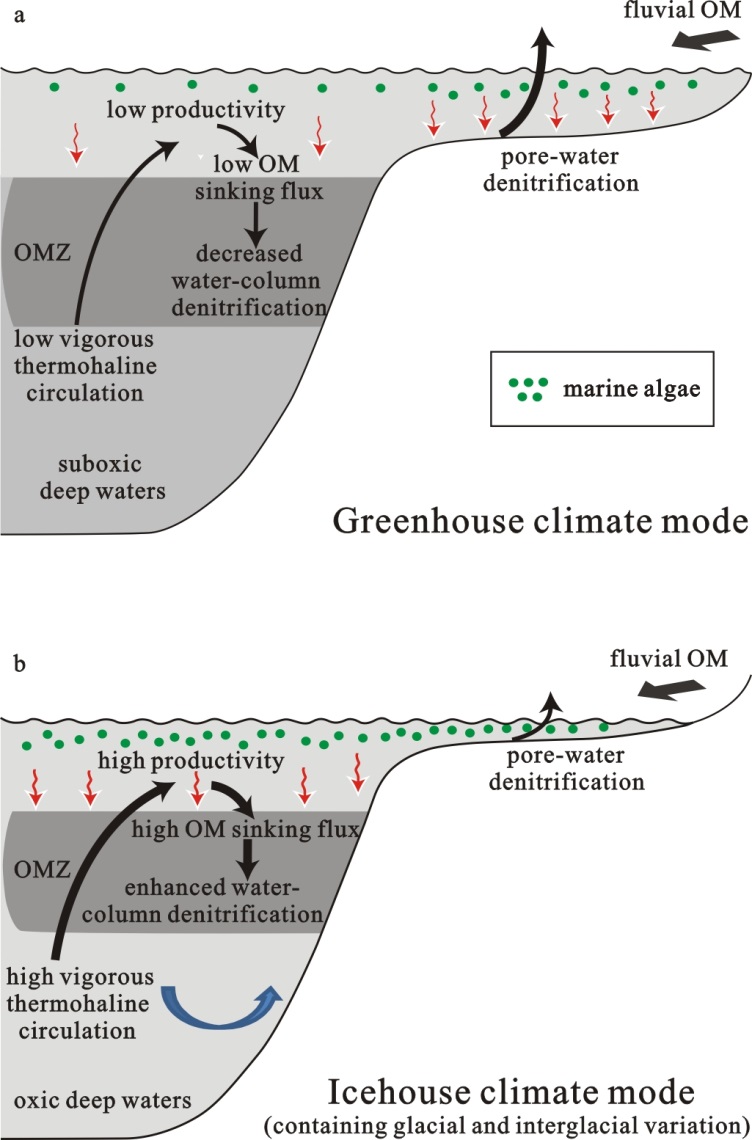The Early Carboniferous was an important interval in geological history characterized by the transition from the greenhouse climate of the Devonian to the icehouse climate of the Carboniferous-Permain. The first glaciation of the Carboniferous-Permain Ice Age is thought to have occurred during the mid-Tournaisian based on glacial deposits, eustatic regression, and positive excursions in carbon (δ13Ccarb and δ13Corg), oxygen (δ18O), nitrogen (δ15N) and strontium (δ87Sr) isotopes. To date, it is still unclear about the process of carbon-nitrogen cycles and their relationships to contemporaneous changes in marine environments during the mid-Tournaisian.
To better understand the process of carbon-nitrogen cycles and paleoenvironmental changes during this critical interval, a high-resolution study of the δ13Ccarb and δ15N records of the Tournaisian at two sections (Malanbian and Long'an) was undertaken by Dr. YAO Le and his colleagues from Nanjing Institute of Geology and Palaeontology, Chinese Academy of Sciences, China University of Geosciences, Wuhan, and so on. Their C-isotope profiles document a large positive excursion, herein termed the ‘mid-Tournaisian carbon isotope excursion’ (TICE), during the Siphonodella isosticha conodont Zone. The TICE event coincided with sedimentologic and oxygen-isotopic evidence of climatic cooling and glaciation during the mid-Tournaisian. It was probably triggered by an increase in organic carbon burial rates linked to changes in global-ocean circulation. The study sections also document a large positive shift in δ15N which is coincided with TICE and thus may have been linked to ocean-circulation changes that resulted in intensified upwelling and an increase in water-column denitrification. The continuation of the N-isotope shift over millions of years may have been linked to glacio-eustatic fall and a long-term shift in the locus of denitrification from continental-shelf sediments to continent-margin oxygen-minimum zones. The TICE event thus marks the onset of sustained continental glaciation during the Late Paleozoic Ice Age.
The paper was published in Chemical Geology, and the research was financially supported by the National Natural Science Foundation of China and the Ministry of Science and Technology Foundation Project.
Reference: Yao, L., Qie W.K., Luo, G.M., Liu, J.S., Algeo, T.G., Bai, X., Yang, B., Wang, X.D., 2015. The TICE event: Perturbation of carbon-nitrogen cycles during the mid-Tournaisian (Early Carboniferous) greenhouse-icehouse transition. Chemical Geology, 401: 1-14.

Lithologic column, conodont biozones, δ15N, δ13Ccarb, Corg/N and carbonate content at the Malanbian (a) and Long'an (b) sections

Model for ocean-circulation control of δ15N variation during greenhouse climate scenario (a) and icehouse climate scenario (b) in the Tournaisian
